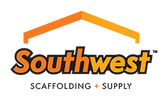Five (5) OSHA Rules for Scaffolding
When It comes to OSHA, following the rules is imperative. Not only is the safety of your crew at stake , but OSHA can levy heavy fines on your company if you do not follow the regulations set out by them. We are highlighting five of the regulations that must be followed in this post.
1. Platform Construction
Your platform is your first line of safety. Falls often happen on platforms that are not properly assembled. How you place your boards can be the difference in your employees going home at the end of the day ,or going to the hospital.
Platforms should be fully decked with OSHA approved boards. Approved boards are solid wood or fabricated boards such as metal and should be medium to heavy duty. A Heavy Duty board should be able to support 75 lbs. per Square foot over the entire span of the board. Each platform must be at least 18 inches wide to prevent falls. The gap between your platform and scaffold should be no more than 1 inch wide. There are exceptions to this rule such as when your scaffolding is oddly shaped or if the brackets are in the way. The largest gap allowed in this situation is 9 inches. Guard rails and/or fall arrest systems must be used at all times when above 10 feet of the ground. when above the 10 foot mark guardrails must be in place unless your scaffold is within 14 inches of the wall. True guardrails must be used. The use of steel or plastic bands and caution tape are not acceptable as a guardrail. There is more on Guardrails later.
2. Scaffolding Access
Access to the scaffolding platform is required. Cross braces are NOT considered an acceptable access point. You should never use braces as an access even if you have a fall arrest system on. Acceptable accesses are:
Hook-on and other attachable ladders
Stairs
Stair towers and
Ramps
3. Safe Scaffold Use
There are strict rules for scaffolding use. You are not to use any shoring or lean-to types of scaffolding.
You are not to have employees on scaffold that has snow or ice accumulation.
employees are not to use scaffold that has spills or trash accumulation.
The exception to these rules are if trained employees ae clearing the scaffold of these obstructions.
Scaffolding should not be used or erected near powerlines. Metal scaffold can, and will conduct electricity from several feet away. When erecting or using scaffold near powerlines use the OSHA table to find out how far you need to be from the lines. Here is a summary of the distance you need:
For insulated lines you must be 3 foot from lines that are less than 300v. and up to 50kv.
If the lines are over 50kv you are to stay a minimum of 10 ft from said lines.
For insulated lines of up to 50kv you are to be a minimum of 1o feet away and for voltage higher than 50kv you must add 1/4 inch for every kv over 50.
The only exception to these rules are if the utility company is called and they deenergize the lines or provide special cover to prevent accidental electrocution.
Fall protection is required when employees are 10 feet or more above ground level.
Harnesses (fall arrest systems) are acceptable when all parts of the system are present. Parts to a fall arrest system are as follows:
Harness
Belt
D-rings
Snaps
Hooks
Lifeline and
Anchors
Body Belts alone are NOT acceptable.
ALL employees are required to be trained in proper fall arrest system usage , and know how to properly self rescue.
Guardrails may also be used as fall protection. You may use guardrails OR fall arrest systems when using a crawling board, on self contained scaffolding, single or 2-point suspended or supported scaffold. You MUST use fall arrest systems on Arial lifts, Chairs, Catenary scaffold, ladder jacks, and Needle beams. You MUST use both guardrails AND fall arrest systems when on suspension scaffold or self contained scaffold that are supported by rope.
5. Support scaffold safety
All personnel must be trained on support scaffold usage. Supported scaffold are where the platform and scaffolding are supported by outriggers, poles, beams or the like. They also use braces to keep the uprights plumb and to keep them from swaying. These type of scaffold must be restrained by tying or bracing them. Supported scaffold must have jack legs on baseplates, a mud sill, or other firm foundation. They should never be erected on dirt or gravel. A forklift or sky trac may be used to support scaffolding as long as it is attached and does not move. A front end loader should not be used as a brace.
We always want to properly use scaffold as it is one of the most dangerous parts of the job. Falls from heights , including improperly erected scaffold and lack of fall protection, are the number one cause of death on construction sites. We all want to make sure our employees go home to their families every evening. Stay safe and stay alert.
Recent Posts
-
How to Create an OSHA-Compliant Jobsite with Southwest Scaffolding Gear
Why OSHA Compliance Matters Every safe, efficient jobsite starts with one goal: keeping everyone sta …Nov 6th 2025 -
5 Common Scaffolding Mistakes (And How to Avoid Them)
Scaffolding: Strong, Stable, and (Sometimes) Tricky At Southwest Scaffolding, we know scaffolding ca …Nov 3rd 2025 -
Best Practices for Scaffold Safety Training on the Job
When it comes to scaffolding, safety isn’t optional—it’s essential. Proper scaffold safety training …Oct 31st 2025




